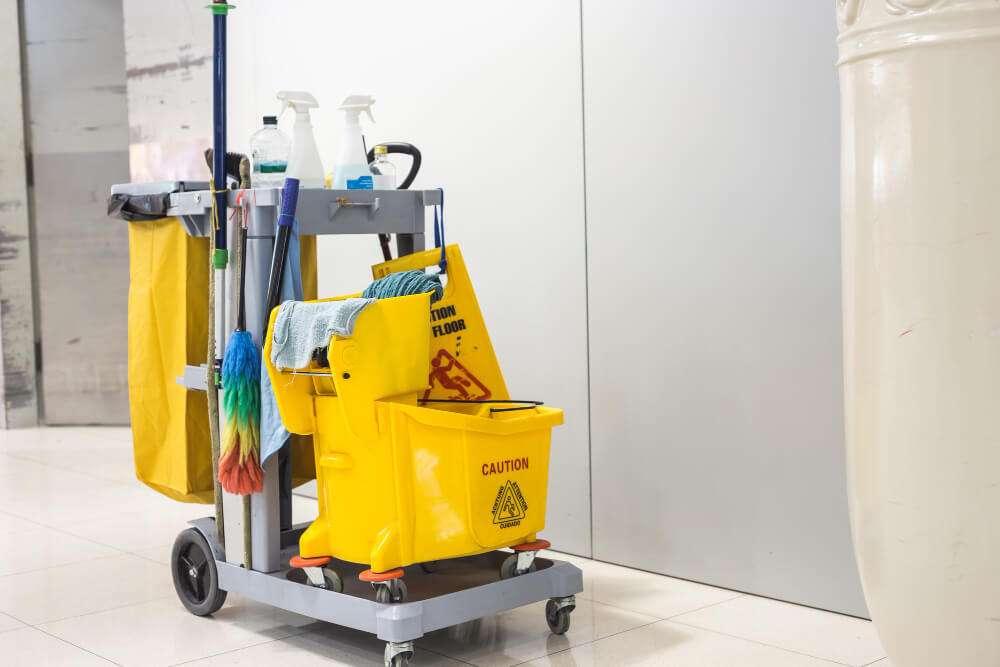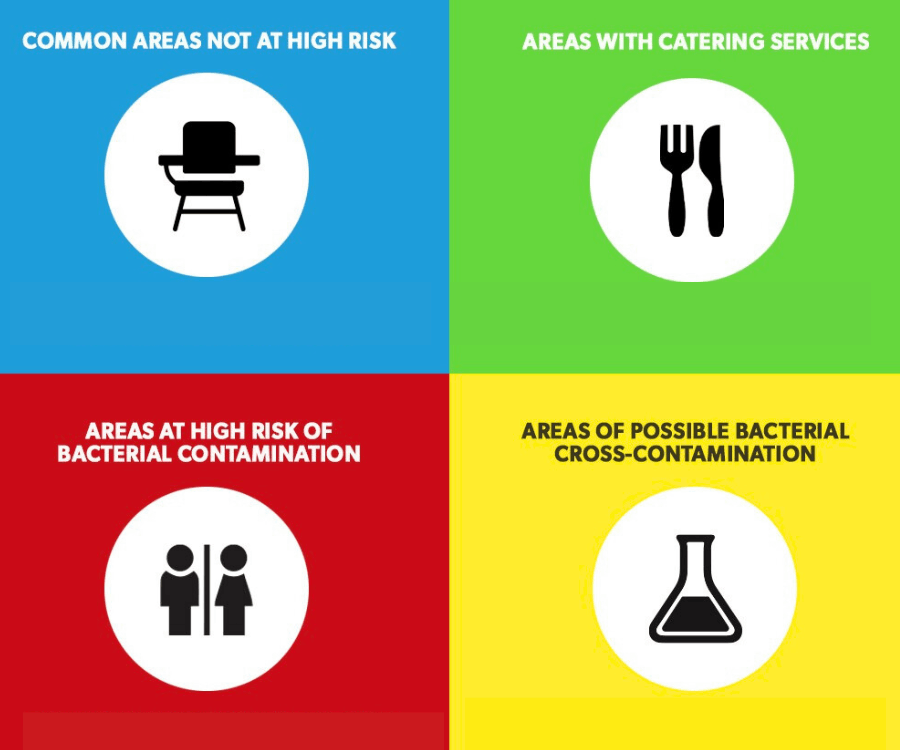
In today’s fast-paced and busy world, cleaning is something most of us would rather do without. However, an effective cleaning regimen is crucial for maintaining a safe and hygienic environment in various settings, including offices, healthcare facilities, restaurants, and schools. Therefore, organizations have come up with creative and efficient ways of making cleaning easier. And, one crucial aspect of an efficient cleaning system is the use of colour-coded cleaning products.
Color-coding is the process of assigning colors to different cleaning materials. The approach is based on specific uses to minimize cross-contamination, increase cleaning efficiency, and reduce the risks of chemical-related injuries.
In this article, we will discuss what is the purpose of color-coded equipment, the importance of colour-coding your cleaning products, and provide tips on how to implement an effective colour-coded cleaning system in your workplace.
What Is The Purpose Of Color-Coded Equipment?
Colour-coded cleaning refers to assigning specific colors like yellow, blue, red, green, white, black, etc. to clean equipment and supplies based on the area or surface they are meant to clean. This practice helps to prevent cross-contamination between different areas and surfaces. It also ensures that each area remains hygienic and safe.
The British Institute of Cleaning Science (BICSc) developed a universal colour coding system in the 1990s to minimize cross-contamination during cleaning.
The standard colour coding recommendations by BICSc include:
- Yellow: Clinical/healthcare areas, remaining surfaces of the washroom, sinks, soap, and paper towel dispensers.
- Red: General washrooms, sanitary appliances, high-risk contaminated areas.
- Green: General food and bar use, food and non-food preparation areas,
- Blue: General lower-risk areas like offices floor, meeting rooms, windows, desks, etc.
- Any other colours: Bespoke or site-specific requirements
These colours can be adapted and expanded to suit the specific needs of your workplace, ensuring that your colour-coded cleaning system is designed for your unique environment.
The Importance Of Colour-Coded Cleaning

Colour-coded cleaning is essential for several reasons:
1. Preventing Cross-Contamination
Cross-contamination is a significant concern in various industries, particularly in healthcare and food services. A study found that there are nearly 500,000 bacterial cells at a square per inch on a single surface of a toilet.
Color coding your cleaning products helps to minimize the risk of transferring harmful bacteria, viruses, and pathogens from one area to another, thereby maintaining a hygienic and safe environment.
2. Simplifying Training And Communication
A colour-coded cleaning system is easy to understand and follow, making it simpler to train employees on proper cleaning practices.
Regardless of language barriers or experience, your team can quickly learn which supplies to use in different areas, ensuring that your cleaning regimen remains consistent and effective.
3. Streamlining Workflow And Reducing Errors
An organized colour-coded cleaning system can help improve efficiency and reduce mistakes.
Your team will spend less time searching for the right supplies and more time focusing on their tasks, resulting in a cleaner and healthier environment.
4. Demonstrating Compliance And Good Practice
Implementing a colour-coded cleaning system demonstrates to auditors, inspectors, and customers that your business takes hygiene and safety seriously. This can lead to improved compliance with regulations, increased customer trust, and a better reputation for your organization.
How To Set Up An Effective Colour-Coded Cleaning System
To ensure that your colour-coded cleaning system is successful, follow these tips:
1. Buy A New Cleaning Equipment Set
When implementing a colour-coded cleaning system, it is advisable to invest in new cleaning equipment.
This ensures that your supplies are free from harmful bacteria and contaminants, providing a fresh start for your new cleaning regimen.
2. Go With The Easiest Approach
Choose a simple and straightforward color-coded system that is easy for your team to understand and follow.
Overly complex systems can lead to confusion and non-compliance, undermining the effectiveness of your cleaning regimen.
3. Train Employees On Colour-Coded Cleaning Practices
Incorporate colour-coding training into employee induction programs or ongoing training initiatives. Some employees with ingrained habits may need additional support to adopt the new system. Ensure that all employees are trained on the colour-coded cleaning system you have implemented.
Provide regular refresher training and closely monitor cleaning practices to ensure that guidelines are being followed. Organizations like BICSc offer a variety of training courses and materials to help businesses implement effective colour-coded cleaning systems.
4. Use Colour-Coded Supplies For All Cleaning Tasks
Ideally, all cleaning equipment and supplies should be colour-coded according to their designated area of use. This includes mops, clothes, gloves, brushes, and buckets. Consistency is key to maintaining an effective colour-coded cleaning system.
Note: Remember that the standard colour coding recommendations can be adapted to suit the unique requirements of your workplace. For instance, you may choose to use different shades or bespoke colors to differentiate between specific areas or surfaces. Customize your colour-coded cleaning system to best serve your organization’s needs.
Colour-Coding In The Kitchen

In addition to cleaning supplies, consider colour-coding kitchen utensils and equipment to prevent cross-contamination between food groups and allergens. This can enhance food safety and demonstrate good practices to both inspectors and customers.
Kitchen utensils that can benefit from colour coding include:
- Chopping boards
- Food containers
- Thermometers
- Knives
- Tongs
Pro Tip: Regularly assess the effectiveness of your colour-coded cleaning system and make adjustments as needed. Keep track of inventory levels for colour-coded supplies, ensuring that you have adequate stock to maintain your cleaning regimen.
Summary
To highlight “What is the purpose of color-coded equipment” Colour-coded cleaning is an essential aspect of maintaining a safe and hygienic environment in various settings. By implementing a straightforward and effective colour-coded cleaning system, you can minimize cross-contamination, streamline your workflow, simplify training, and demonstrate good practice to auditors, inspectors, and customers.
Not only this, but when it is properly executed, color-coding cleaning products can significantly reduce hospital-acquired infections, improve cleaning productivity, and, most importantly, safeguard the health of cleaning staff.

